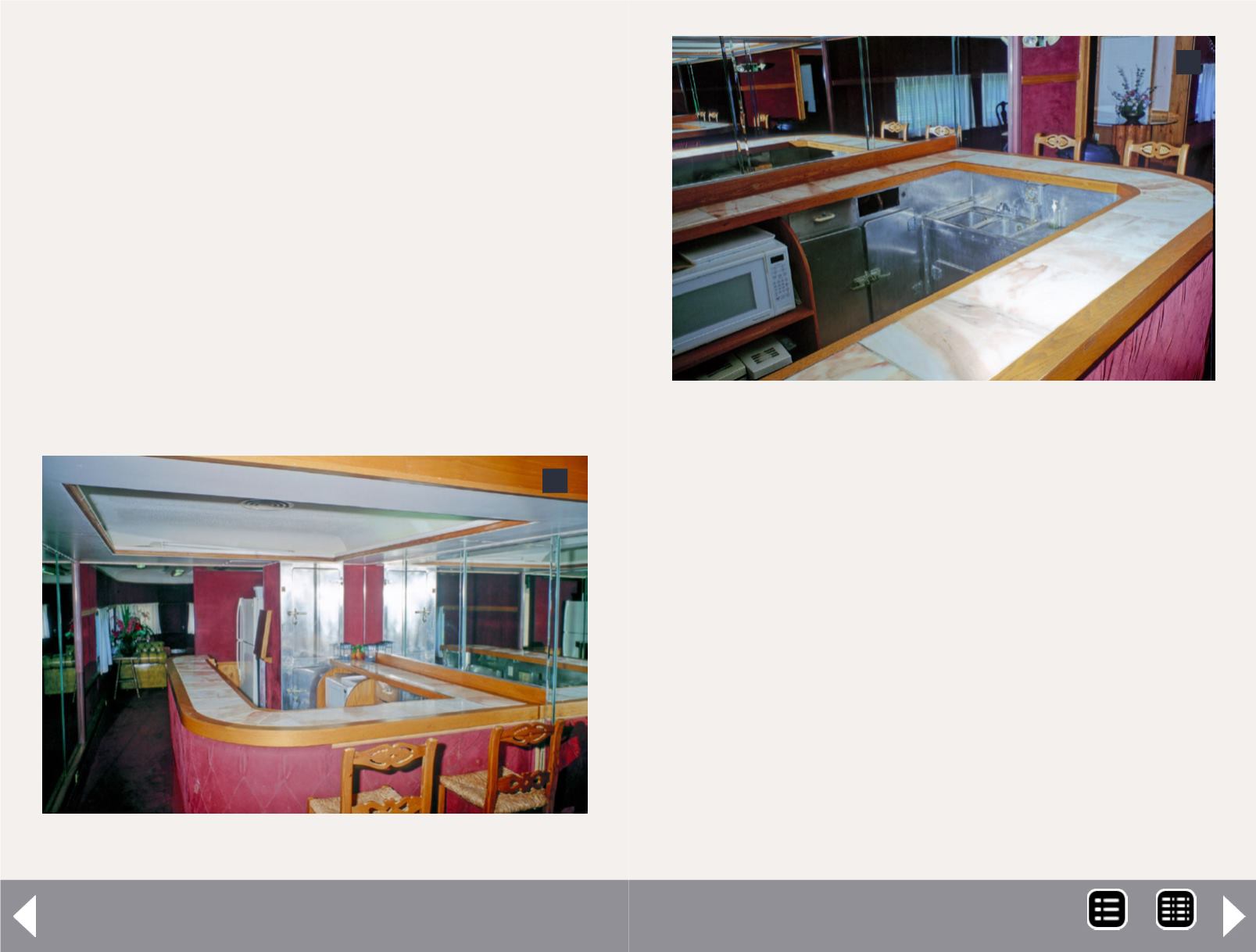
City of Miami part 2 - 3
I resized the image back to the correct size and printed a couple of
copies to work with. The good news is that the HO sized image is
smaller than the photo in the book, so pixilation is not a problem.
I was able to discard the one missing notch at the top left of the
mural. The slight compression of the mural is necessitated by the
model’s interior dimensions.
There were no images of the top of the bar and the area behind
the bar in either the book or on the internet. Fortunately a few
months prior, I had found that the Bamboo Grove was only 105
miles away frommy home. Time for a road trip.
The original 1940 bar still exists in the car, and most of the area
directly behind the bar is unchanged, so I took close-up photos of
these areas. The wall where the mural was has has been removed,
and the short hall it enclosed has been opened up.
I took close-up shots of the surface of the bar, which had a
wooden border with a ceramic tile center strip. Behind where the
bar turned, was a double sink. I was told that it was in returning
these sinks to service for the clubhouse that the facing surface of
the bar was removed and discarded.
Further research led me to believe that the ceramic tile was added
during the refurbishment of the car in the 1950’s, and that the
original bar surface was all wood. One of the 1940s photographs
seems to indicate this. The bar now extends past where the origi-
nal wall was, and all the current ceramic tiles match perfectly,
even the ones in the area of the bar that did not exist in 1940.
I learned the design of the model car is done in such a way that
the interior space is smaller than the prototype. To that end,
about 1/8 of an inch is lost from each of the walls and overhead.
That 1/4” lost is not really significant over the length (85 feet)
6: The double sinks and cabinets under the bar.
6
5: The bar today.
5
MRH-Aug 2013


